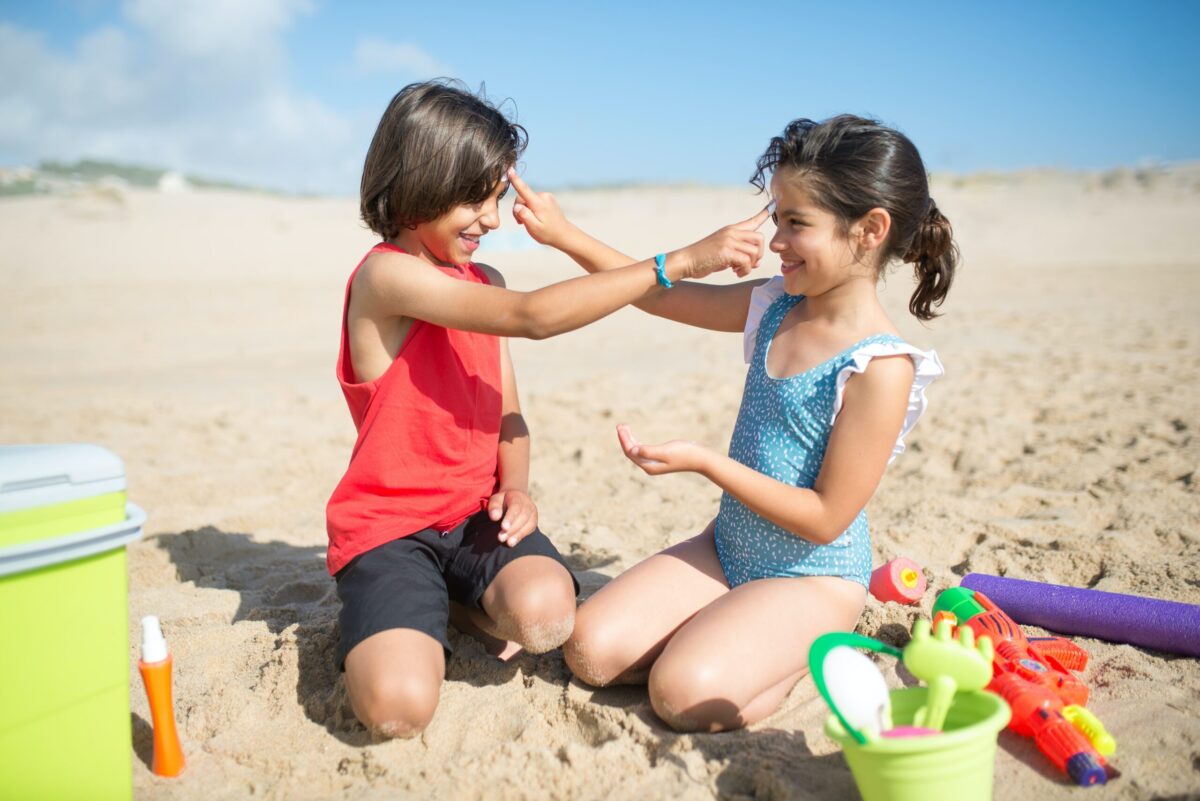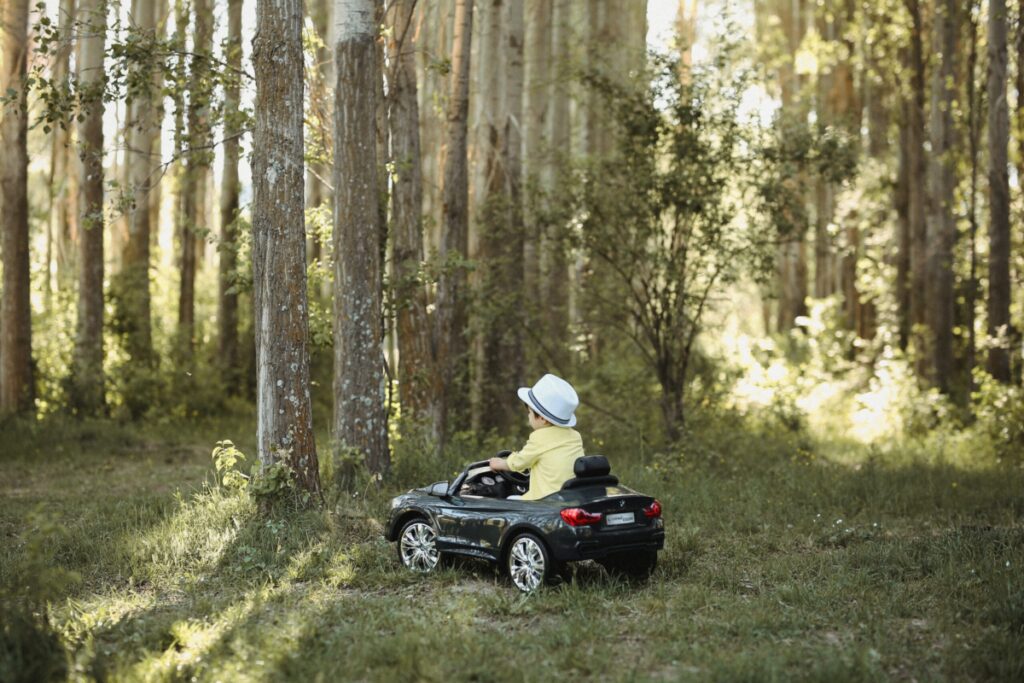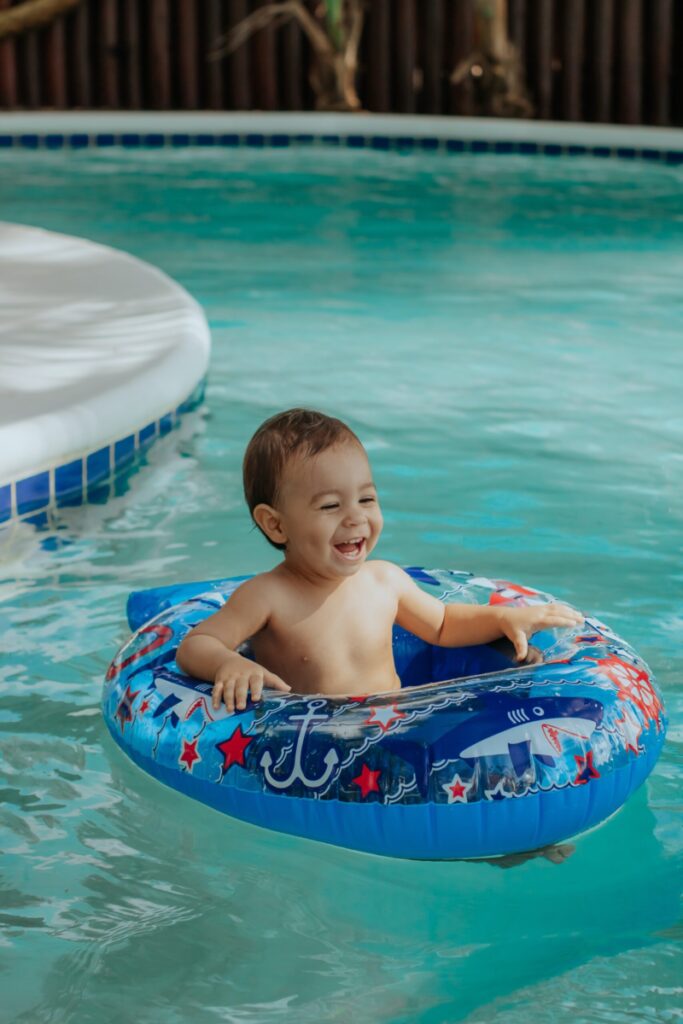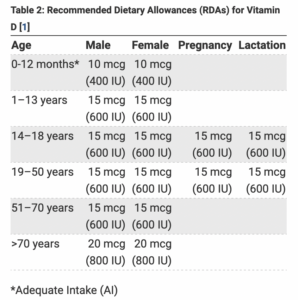What is the best sunscreen for kids? Whatever you have handy! Any sunscreen in addition to other sun protective measures is better than none. Not only are sunburns uncomfortable, but exposure to UV rays also increases our risk of skin cancers and expedites signs of aging. For young ones, this is particularly important. They are outside more and rely on grownups to cover and protect them adequately. They also have thinner, more sensitive skin, and sun damage is cumulative! Although we are discussing sun safety for kids, these tips apply to all of us! It is never too late to start implementing adequate sun protection. Read on for more specific tips about the safest and most effective sun protection!
Sun Protection for Babies:
You may have heard that you can’t use sunscreen in babies under six months, but that is not true! Read on for how best sun protection for your littlest humans.
- Babies under six months should be kept out of direct sunlight as much as possible.
- This doesn’t mean you shouldn’t take them outside, but it does mean keeping them covered and protecting them with shade as much as you can.
- Limit time in the sun during peak hours, between 10 am and 2 pm.
- If shade isn’t available, you can use shade tents, umbrellas at the beach and park, and lightweight sun covers over strollers or carriers.
- Cover as much of their skin as possible with lightweight, long-sleeved shirts, pants, and sun hats.
- If there are small areas exposed like hands, feet, and face, it is ok and recommended to use sunscreen in these areas.
What is the best sunscreen for babies?
We recommend physical sunscreens using mineral-based ingredients like zinc oxide or titanium dioxide as the best sunscreen options for babies. This is because there is less risk of skin irritation, and the ingredients are generally safer and better for the environment.
Sun Protection for Kids:
The best sun protection for kids includes a combination of sunscreen and barriers!
- Over six months, apply a broad-spectrum sunscreen to any exposed skin areas.
- Apply everywhere generously!
- It is also best to use 15-30 minutes before sun exposure so it has time to dry.
- Reapply every 2 hours or after swimming, sweating, or wiping with a towel.
- The tips above about shade and protective clothing for babies also apply to older kids and their grownups!
- Apply sunscreen whenever you and your kiddo go outside, even on cloudy or rainy days!
What are Physical versus Chemical sunscreens?
- Chemical Sunscreens work like a sponge and absorb UV rays.
- Physical Sunscreens work like a shield deflecting damaging UV rays away from your skin. These are also called mineral sunscreens.
What to look for in a sunscreen
The best sunscreens have the following characteristics:
- Broad-spectrum.
- SPF 30 or higher.
- Paraben and phthalate free
- Environmentally friendly (no Oxybenzone)
- We prefer mineral sunscreens (Zinc Oxide and Titanium Dioxide) due to less risk of skin irritation, a better safety profile, and they tend to be more environmentally friendly.
- Still, ANY sunscreen, including chemical sunscreen, is safe and better than none!
What is the best sunscreen for sensitive skin?
Just like for babies, physical (mineral) sunscreens are your best bet for those with sensitive skin. Also, look for fragrance-free, hypoallergenic, phthalate, and paraben-free. Of course, you may also opt for sunscreens marketed for sensitive skin, but check the label to make sure!
Can sunscreen make you Vitamin D deficient?
Vitamin D is a nutrient that helps keep our bones strong and healthy and may play a role in muscle and immune function. When your skin is exposed to sunlight, your body produces Vitamin D. Some people are under the impression that you shouldn’t wear sunscreen all the time to get enough vitamin D. However, this is not true! You can still maintain your Vitamin D levels without putting yourself at risk for skin cancers!
- There is no link between daily sunscreen use and Vitamin D deficiency.
- It doesn’t take much sun exposure for your body to produce Vitamin D!
- No sunscreen is perfect, and we usually don’t apply it perfectly, allowing enough UV exposure to produce Vitamin D.
- You can consider putting sunscreen on after a brief period outside, 10-15 minutes, to allow for some direct sun exposure for vitamin D production while avoiding prolonged risk.
- The risks of skin cancer from sun exposure far outweigh any risk of daily sunscreen use and potential vitamin D deficiency.
- You can also get vitamin D in your diet! Foods containing vitamin D include fatty fish, egg yolks, fortified milk, and OJ.
- You can also take a supplement with vitamin D, but check with your physician for your correct dose!
Are Sunscreens Safe?
Yes, consistent sunscreen use is safe and recommended!
- The safety of certain sunscreen ingredients is a hot topic currently, but don’t let misinformation scare you out of using it!
- The FDA is advocating for more safety data on several chemical sunscreen ingredients to determine how much they are absorbed into the skin and whether or not it is harmful if they do.
- However, their recommendation is NOT to STOP using these sunscreens.
- The FDA has reported enough data on two sunscreen ingredients to consider them “generally safe and effective;” Zinc Oxide and Titanium Dioxide (aka. Mineral sunscreens.)
- Some ingredients in chemical sunscreens are harmful to the environment, particularly the coral reefs, namely Oxybenzone.
Take-Aways
- Sun protection is super important for little ones and ourselves!
- It is best to use a combination of physical barriers like shade, clothing, and hats in addition to sunscreen.
- For babies under six months, focus on avoiding prolonged exposure to direct sunlight by keeping them in the shade or covered as much as possible. Use a mineral sunscreen on areas that are not covered.
- For the rest of us, in addition to physical barriers, liberally apply a broad-spectrum sunscreen with SPF 30 or higher! And don’t forget to reapply!











 Probiotics:
Probiotics: Echinacea
Echinacea Zinc:
Zinc: Elderberry:
Elderberry: Vitamin C:
Vitamin C:  At
At